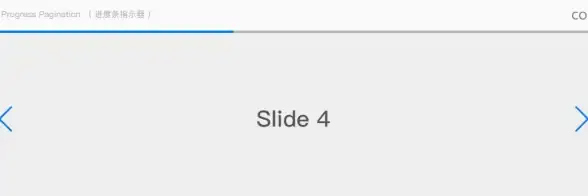上一篇
前端开发 数据展示 vue分页、vue分页器组件实现与使用详解
- 问答
- 2025-08-26 07:01:32
- 6

🚀 Vue分页器组件实现与使用详解(2025最新版)
在大数据量场景下,分页器是提升用户体验的关键组件!通过本文,你将掌握Vue3分页器的完整实现流程,包括后端交互、动态页码生成等核心技巧,并附上2025年最新代码示例!💡
🔧 核心实现步骤
1️⃣ 数据源与分页参数设置
// 主组件数据
data() {
return {
items: [], // 数据源
currentPage: 1, // 当前页码
itemsPerPage: 10, // 每页条数
totalItems: 100, // 总数据量
continues: 5 // 连续页码数
}
}
2️⃣ 创建分页组件(🛠️ 组件化封装)
<!-- Pagination.vue -->
<template>
<div class="pagination">
<button @click="prevPage" :disabled="currentPage === 1">上一页</button>
<span v-if="start > 1">1...</span>
<button
v-for="page in pageList"
:key="page"
@click="handlePage(page)"
:class="{ active: page === currentPage }"
>
{{ page }}
</button>
<span v-if="end < totalPages">...</span>
<button @click="nextPage" :disabled="currentPage === totalPages">下一页</button>
</div>
</template>
<script setup>
import { computed } from 'vue';
const props = defineProps({
totalItems: Number,
itemsPerPage: Number,
currentPage: Number,
continues: { type: Number, default: 5 }
});
const totalPages = computed(() => Math.ceil(props.totalItems / props.itemsPerPage));
const pageList = computed(() => {
const half = Math.floor(props.continues / 2);
let start = props.currentPage - half;
let end = props.currentPage + half;
// 边界处理
if (start < 1) { start = 1; end = props.continues; }
if (end > totalPages.value) { end = totalPages.value; start = end - props.continues + 1; }
return Array.from({length: end - start + 1}, (_,i) => start + i);
});
</script>
3️⃣ 处理分页逻辑(🧠 智能页码计算)
// 主组件方法
const handlePageChange = (page) => {
currentPage.value = page;
fetchData(); // 触发数据重新加载
};
// 计算属性示例
const paginatedItems = computed(() => {
const start = (currentPage.value - 1) * itemsPerPage.value;
const end = start + itemsPerPage.value;
return items.value.slice(start, end);
});
4️⃣ 与后端API交互(📡 实战数据加载)
// 使用Axios请求分页数据
const fetchData = async () => {
try {
const response = await axios.get('/api/data', {
params: {
page: currentPage.value,
pageSize: itemsPerPage.value
}
});
items.value = response.data.items;
totalItems.value = response.data.total;
} catch (error) {
console.error('数据加载失败', error);
}
};
🚀 高级技巧
1️⃣ 动态页码生成(🔄 智能省略号)
// 计算连续页码范围
const calculatePageRange = () => {
if (totalPages.value <= continues.value) return Array.from({length: totalPages.value}, (_,i) => i+1);
const half = Math.floor(continues.value / 2);
let start = currentPage.value - half;
let end = currentPage.value + half;
if (start < 1) { start = 1; end = continues.value; }
if (end > totalPages.value) { end = totalPages.value; start = end - continues.value + 1; }
return [1, '...', ...Array.from({length: end - start + 1}, (_,i) => start + i), '...', totalPages.value];
};
2️⃣ 性能优化(⚡ 虚拟滚动)
<!-- 虚拟滚动分页 -->
<template>
<div class="virtual-scroll">
<div
v-for="item in visibleItems"
:key="item.id"
:style="{ transform: `translateY(${item.index * itemHeight}px)` }"
>
{{ item.content }}
</div>
</div>
</template>script setup>
const itemHeight = 40; // 每项高度
const visibleCount = Math.ceil(window.innerHeight / itemHeight);
const visibleItems = computed(() => {
const start = (currentPage.value - 1) * itemsPerPage.value;
const end = start + visibleCount;
return items.value.slice(start, end);
});
</script>
🧩 使用现有组件库(快速上手)
Element Plus 分页组件
<template>
<el-pagination
@current-change="handleCurrentChange"
:current-page="currentPage"
:page-size="itemsPerPage"
:total="totalItems"
layout="total, sizes, prev, pager, next, jumper"
/>
</template>
<script setup>
import { ref } from 'vue';
const currentPage = ref(1);
const itemsPerPage = ref(10);
const totalItems = ref(100);
const handleCurrentChange = (page) => {
currentPage.value = page;
fetchData();
};
</script>
💻 完整示例代码
<template>
<div>
<ul>
<li v-for="item in paginatedItems" :key="item.id">{{ item.name }}</li>
</ul>
<Pagination
:total-items="totalItems"
:items-per-page="itemsPerPage"
:current-page="currentPage"
@page-changed="handlePageChange"
/>
</div>
</template>
<script setup>
import { ref, computed } from 'vue';
import Pagination from './components/Pagination.vue';
import axios from 'axios';
const items = ref([]);
const currentPage = ref(1);
const itemsPerPage = ref(10);
const totalItems = ref(100);
const paginatedItems = computed(() => {
const start = (currentPage.value - 1) * itemsPerPage.value;
const end = start + itemsPerPage.value;
return items.value.slice(start, end);
});
const fetchData = async () => {
const response = await axios.get('/api/data', {
params: { page: currentPage.value, pageSize: itemsPerPage.value }
});
items.value = response.data.items;
totalItems.value = response.data.total;
};
const handlePageChange = (page) => {
currentPage.value = page;
fetchData();
};
</script>
通过本文,你已掌握:
- ✅ 后端分页与前端分页的权衡
- ✅ 动态页码生成算法
- ✅ 与API的无缝交互
- ✅ 组件化封装最佳实践
- ✅ 性能优化技巧(虚拟滚动)
立即实践,让你的数据展示体验飞起来!🚀

本文由 业务大全 于2025-08-26发表在【云服务器提供商】,文中图片由(业务大全)上传,本平台仅提供信息存储服务;作者观点、意见不代表本站立场,如有侵权,请联系我们删除;若有图片侵权,请您准备原始证明材料和公证书后联系我方删除!
本文链接:https://cloud.7tqx.com/wenda/735454.html









发表评论